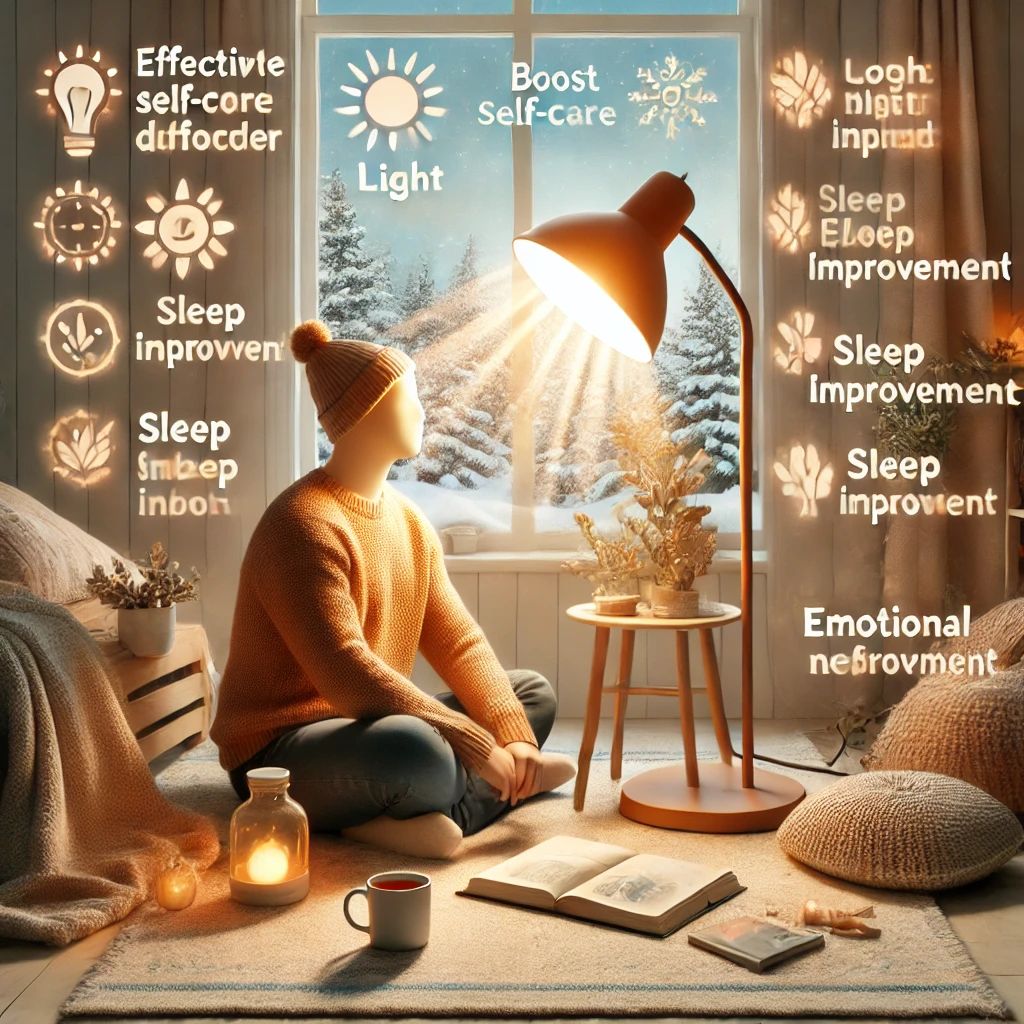
Understanding Seasonal Affective Disorder (SAD)
Seasonal Affective Disorder (SAD) is a type of depression that occurs at specific times of the year, typically during the fall and winter months when daylight hours are shorter. This mood disorder can lead to symptoms such as low energy, fatigue, feelings of hopelessness, difficulty concentrating, and an increased need for sleep. The decrease in natural sunlight during the colder months is a major factor in triggering SAD, but self-care strategies can help manage symptoms and improve your well-being.
Why Self-Care is Essential for Managing SAD
Self-care is crucial when dealing with SAD because it empowers you to take proactive steps to manage your mood, energy levels, and mental health. While professional treatment may be necessary for severe cases, incorporating daily self-care practices can make a significant difference in reducing the intensity of symptoms and helping you feel more balanced during the winter months.
Increase Exposure to Natural Light
One of the most effective ways to manage SAD is to increase your exposure to natural light. Sunlight helps regulate your body’s internal clock and boosts serotonin levels, which can improve mood:
Spend time outdoors: Make it a habit to go outside during daylight hours, especially in the morning. Even on cloudy days, natural light exposure can help lift your mood.Maximize indoor light: Open your curtains or blinds during the day to let in as much natural light as possible. If your home or workspace lacks sufficient natural light, consider rearranging furniture to be closer to windows.Use light therapy: Light therapy lamps simulate sunlight and can help alleviate SAD symptoms. A daily session of 20-30 minutes in front of a lightbox can boost your energy levels and reduce feelings of depression.Stay Active and Move Your Body
Physical activity is a powerful tool for managing symptoms of depression, including SAD. Exercise releases endorphins, which improve mood and help reduce stress:
Exercise regularly: Incorporate moderate physical activity into your routine, such as walking, yoga, or swimming. Aim for at least 30 minutes of exercise most days of the week.Exercise outdoors: If possible, combine outdoor activity with exercise by going for a walk or run during daylight hours. This provides both mood-boosting sunlight and physical movement.Try gentle indoor workouts: On days when it’s too cold or gloomy to go outside, opt for indoor exercises like stretching, Pilates, or dancing to get your body moving and blood flowing.Prioritize Sleep Hygiene
SAD can disrupt sleep patterns, often leading to oversleeping or difficulty getting restful sleep. Establishing a consistent sleep routine can help regulate your body’s internal clock and improve your mood:
Set a regular sleep schedule: Go to bed and wake up at the same time each day, even on weekends. Consistency helps maintain your circadian rhythm and promotes better sleep.Create a calming bedtime routine: Wind down before bed by engaging in relaxing activities like reading, taking a warm bath, or practicing deep breathing exercises.Limit screen time: Avoid using electronic devices before bed, as the blue light emitted from screens can interfere with your sleep. Instead, opt for calming, screen-free activities.Eat a Balanced, Mood-Boosting Diet
The food you eat plays a significant role in your mental and emotional well-being. Certain foods can help boost your mood, stabilize energy levels, and support brain health:
Focus on whole foods: Include a variety of fruits, vegetables, whole grains, lean proteins, and healthy fats in your diet. These nutrient-dense foods support brain function and help regulate mood.Incorporate omega-3s: Foods rich in omega-3 fatty acids, such as salmon, walnuts, and flaxseeds, have been shown to improve mood and reduce symptoms of depression.Limit sugar and processed foods: While it’s tempting to reach for comfort foods, processed snacks and sugary treats can lead to energy crashes and mood swings. Opt for healthier alternatives like nuts, yogurt, or dark chocolate.Practice Mindfulness and Relaxation Techniques
Managing stress and practicing mindfulness can be effective in reducing the emotional impact of SAD. By staying present and practicing relaxation techniques, you can prevent negative thoughts from spiraling:
Meditation and deep breathing: Engage in mindfulness practices such as meditation or deep breathing exercises to calm your mind and reduce stress. Even just a few minutes a day can help improve mental clarity and emotional balance.Journaling: Writing down your thoughts and emotions can help you process feelings of sadness or anxiety. Journaling serves as an emotional outlet and helps you reflect on what might be triggering your SAD symptoms.Progressive muscle relaxation: This technique involves tensing and then relaxing each muscle group in your body to relieve tension and promote relaxation. It’s particularly useful before bedtime to reduce stress and prepare for sleep.Stay Connected with Loved Ones
Isolation and withdrawal are common symptoms of SAD, but staying socially connected can help combat feelings of loneliness and improve your mood:
Reach out to friends and family: Make an effort to stay in touch with loved ones, even if it’s through phone calls, video chats, or messaging. Social support plays a key role in maintaining mental health.Join a support group: If you’re struggling with SAD, consider joining a local or online support group where you can connect with others who understand what you’re going through.Plan social activities: Engage in low-pressure social activities, such as meeting a friend for coffee, attending a class, or joining a book club. Even small interactions can make a big difference.Conclusion: Take Charge of Your Well-Being
Seasonal Affective Disorder may feel overwhelming, but by incorporating self-care practices into your daily routine, you can significantly improve your mood and overall well-being during the colder months. From increasing your exposure to natural light and staying physically active to practicing mindfulness and staying socially connected, these simple strategies can help you manage SAD and embrace the winter season with more positivity.
The article was prepared by Lyle Gardner.



